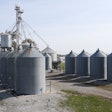
The Occupational Safety and Health Administration (OSHA) has published in the Federal Register a new reporting rule for employers that could pose challenges for the animal feed industry.
The regulation, which is effective August 20, 2016 — with phased-in data submissions starting in 2017 — would require employers for the first time to electronically report to OSHA their injury and illness records. In the past, injury and illness records were only accessible to OSHA during inspections.
Under the new provisions, OSHA plans to take that information and post it on the internet for public access and review. This represents a major and historic shift in how employer records are handled and how a company may be put in the spotlight as unsafe if your injury and illness records are taken out of context and mischaracterized.
The American Feed Industry Association (AFIA) has voiced concerns over the measure since OSHA first proposed the rule in 2013 through a broad-based industry group called the Coalition for Workplace Safety. The coalition says it is now considering litigation options against OSHA for exceeding its legal authority.
The regulation will apply to large and small employers. Facilities with 250 or more employees in industries covered by the rule — which OSHA estimates to be around 34,000 locations — must electronically submit to OSHA injury and illness information from OSHA Forms 300, 300A and 301. Facilities with 20-249 employees on OSHA’s list of “high hazard” industries — or potentially another 432,000 locations — must electronically submit information from OSHA Form 300A only. Animal feed and related operations are on that list.
Whistleblower requirements
The rule also contains “whistleblower” requirements that did not appear in the original proposed rule in 2013. Under the new rule, OSHA itself can decide to issue a citation to an employer when the agency believes that an employer has discouraged or suppressed an employee from reporting an injury — even if that employee has never filed a whistleblower claim.
With the whistleblower mechanism, OSHA has created for itself a new authority to challenge company safety incentive programs that the agency feels are keeping workers from reporting an injury or illness. For companies with certain types of programs that reward employees for safety improvements, the rule will make it much easier for OSHA to issue a “whistleblower” citation.

















